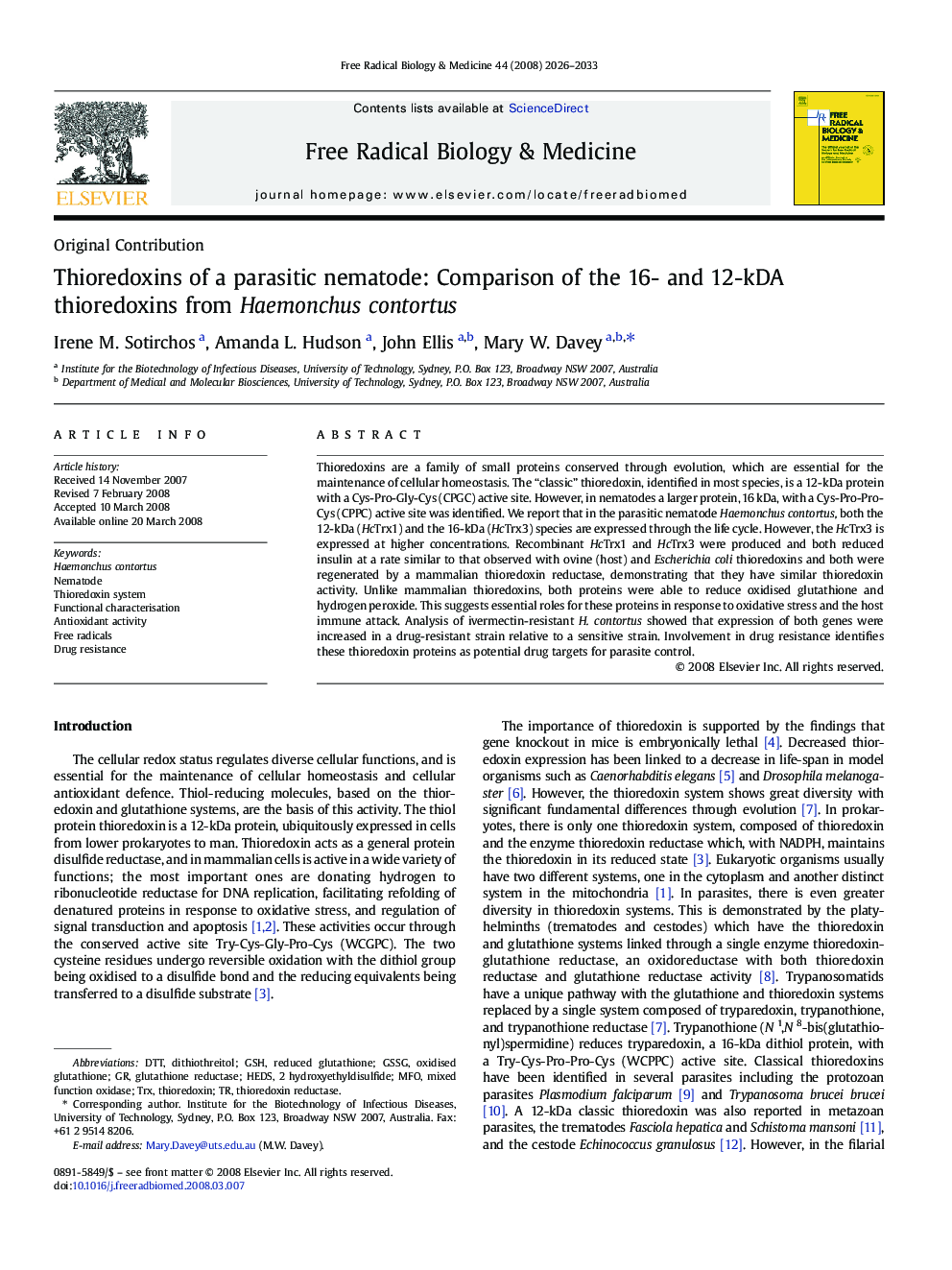| کد مقاله | کد نشریه | سال انتشار | مقاله انگلیسی | نسخه تمام متن |
|---|---|---|---|---|
| 1910968 | 1046795 | 2008 | 8 صفحه PDF | دانلود رایگان |

Thioredoxins are a family of small proteins conserved through evolution, which are essential for the maintenance of cellular homeostasis. The “classic” thioredoxin, identified in most species, is a 12-kDa protein with a Cys-Pro-Gly-Cys (CPGC) active site. However, in nematodes a larger protein, 16 kDa, with a Cys-Pro-Pro-Cys (CPPC) active site was identified. We report that in the parasitic nematode Haemonchus contortus, both the 12-kDa (HcTrx1) and the 16-kDa (HcTrx3) species are expressed through the life cycle. However, the HcTrx3 is expressed at higher concentrations. Recombinant HcTrx1 and HcTrx3 were produced and both reduced insulin at a rate similar to that observed with ovine (host) and Escherichia coli thioredoxins and both were regenerated by a mammalian thioredoxin reductase, demonstrating that they have similar thioredoxin activity. Unlike mammalian thioredoxins, both proteins were able to reduce oxidised glutathione and hydrogen peroxide. This suggests essential roles for these proteins in response to oxidative stress and the host immune attack. Analysis of ivermectin-resistant H. contortus showed that expression of both genes were increased in a drug-resistant strain relative to a sensitive strain. Involvement in drug resistance identifies these thioredoxin proteins as potential drug targets for parasite control.
Journal: Free Radical Biology and Medicine - Volume 44, Issue 12, 15 June 2008, Pages 2026–2033